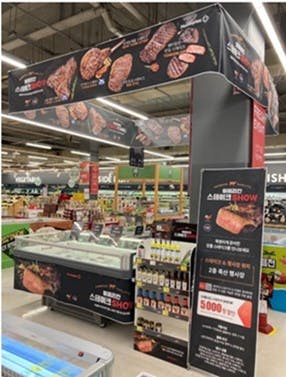Promotions Position U.S. Beef as Top Quality with Consumers in Korea
Confidence in U.S. beef has come a long way since 2008 when the Korean market was reopened to U.S. beef. Annual surveys show consumer confidence has risen steadily from 5% in 2010 to 64% last year. In 2021, exports to Korea reached the highest single-year value for any destination at $2.38 billion, an increase of 38% over 2020 and 194% over 2015, according to year-end data released by USDA and compiled by USMEF.
With an established reputation as a high-value alternative to expensive domestic beef, U.S. beef is also making its mark with consumers on the basis of taste and tenderness. December is traditionally a season of year-end business gatherings at restaurants but with COVID restrictions in place in late 2021, USMEF anticipated that these events would shift to at-home celebrations.
“Some of Korea's best food is prepared at special year-end gatherings and we saw this as an opportunity to position U.S. beef as a high-quality option during an important time of celebration,” said Junil Park, USMEF Korea director. With funding from the Beef Checkoff Program, Illinois Corn Checkoff, Colorado Corn Checkoff and USDA’s Agricultural Trade Program, USMEF partnered with five major retailers and e-commerce platforms in December:
- A tomahawk steak promotion was implemented at 141 outlets of E-Mart;
- An “American Steak Show” was held at 135 outlets of Homeplus;
- Chilled chuck eye was featured at 106 outlets of Lotte Mart;
- U.S. steak and home meal replacement items were promoted on two leading e-commerce platforms – Coupang and Market Kurly.
In addition to custom point-of-sale materials and giveaways, USMEF generated customized social media content in support of the promotions. Park reported triple-digit sales increases for each of the promotions.

“Road Shows” were implemented at 20 of the 135 participating Homeplus outlets, in which promotional sales booths were constructed and resting rack sets incentivized consumers to purchase a specified amount of U.S. beef
